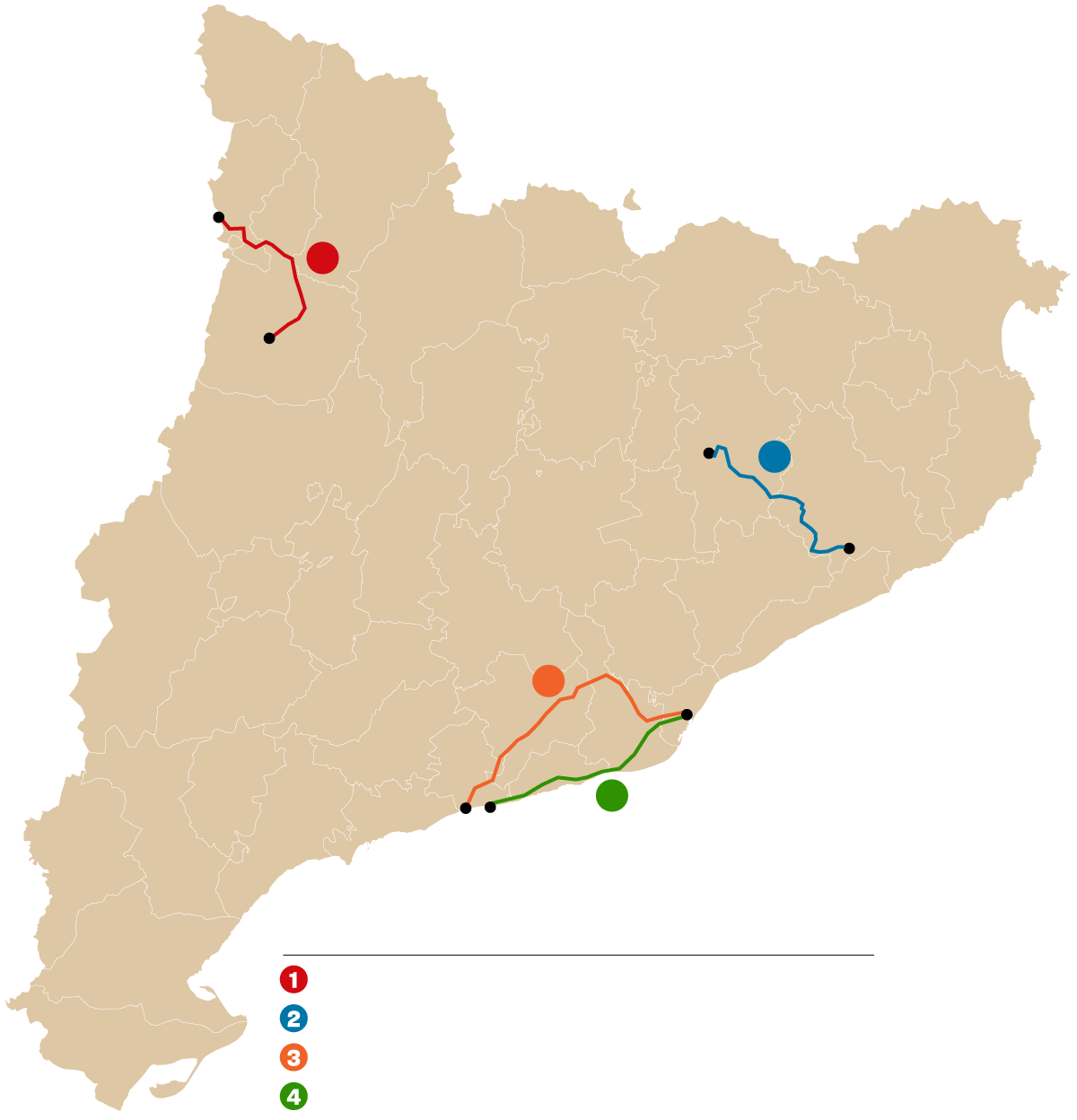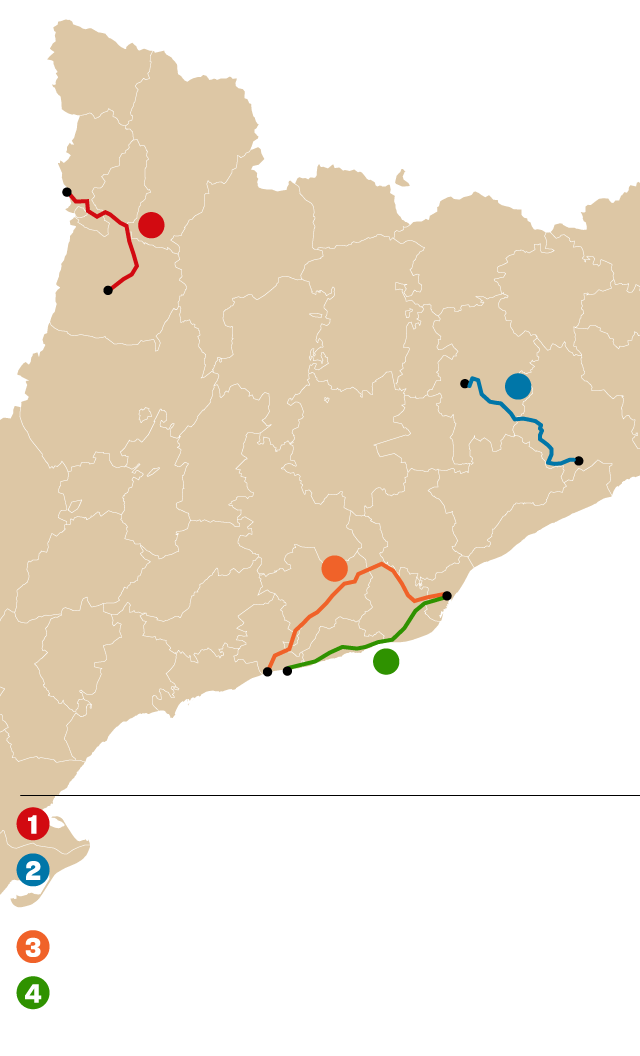More trips for fifteen overcrowded intercity bus lines
Last year, the network reached its all-time high of 80 million passengers.


BarcelonaBuses in Catalonia have never been more in demand than they are now. Last year, the Catalan intercity network exceeded 80 million trips, reaching an all-time high, and the trend is set to continue through 2025, according to forecasts from the Department of Territory. For this reason, the Catalan government has been implementing an emergency plan for the past year to improve service and create new lines in areas that have been poorly served until now, as well as strengthen lines overwhelmed by the increase in passengers in recent years. As part of the plan, four new intercity bus lines will begin operating this September, and the frequency of around fifteen existing lines will be increased.
These are the first improvements that the Catalan Government plans to make over the next few months, in which it will allocate 17 million euros to strengthen the network until August 2026. The Minister of Territory, Silvia Paneque, explained that in the last year they have invested 4 million euros in "improving the and" they want to focus on "sizing and attending to saturated lines where the service is not optimal." The province of Barcelona concentrates the bulk of the 62 improvements that the Catalan Government plans to make to the intercity bus network, especially because the starting point is a mess with more than 100 disordered lines.
Updates to intercity bus lines
Increased frequency
- Express e6 Vilafranca-Barcelona
- Express e5 Igualada-Barcelona
- Express e18 San Sadurní of Anoia-Barcelona
- Express e24 Esparreguera-Barcelona
- Express e27 San Lorenzo-Gelida-Barcelona
- Express e13 Mataró-Granollers-Sabadell
- Express e2 Alfarràs-Lleida
- Express e3 Alcarràs-Lleida
- Express e5 Almacelles-Lleida
- Line 865 Mataró-UAB
- Regular line Esparreguera-Martorell
- Regular line Igualada-Martorell-UAB
- Regular line Castelldans-Lleida
- Regular line Aitona-Soses-Lleida
- Direct line Olot-Barcelona
While long-term measures are still pending, as the Government has not yet specified how it plans to rethink the current model or its timeline, Paneque asserted that the improvements announced this Monday are intended to have an "immediate" effect. Thus, starting this September, up to nine lines connecting Barcelona with other municipalities in the south of the Catalan capital, such as Vilafranca del Penedès, Igualada, Sant Sadurní d'Anoia, Esparreguera, and Sant Llorenç d'Hortons, will have more frequencies to meet the increase in demand. With this "commitment" to buses, the Government aims to "guarantee territorial balance" and mitigate the climate impact, since, according to the Minister, they also discourage the use of cars to enter the Catalan capital.
This means that the Vilafranca-Barcelona corridor will have 45 outbound and 43 return journeys from weekdays, eight and six more than currently. The e5 express between Igualada and Barcelona will add four more journeys in each direction, bringing the total to 33, starting on the 8th. The e18 between Sant Sadurní d'Anoia and Barcelona will have 27 outbound and 25 return journeys, six and five more, respectively. Starting on September 8, the e24 between Esparreguera and Barcelona will also see increased service, reaching 18 outbound and 14 return journeys, and the e27 between Sant Llorenç and Barcelona will increase to 21 journeys.
In addition to the increase in frequencies, the regional minister also highlighted the launch of three new lines starting this Monday: a direct express line between El Vendrell and Barcelona; the Calafell-Barcelona line, with stops in Segur de Calafell, Cunit, and Cubelles; and a new line between Baix Montseny and the University of Vic. Starting on the 12th of this month, a new line will be added between Pont de Suert and Tremp, designed to facilitate travel for students at educational centers in Pallars Jussà and Alta Ribagorça without having to go through Lleida.
More frequencies in Lleida and the UAB
In addition to increasing the number of trips made by buses connecting Barcelona with other points in Catalonia, the Department of Territory is also strengthening the services that connect Mataró and Igualada with the Autonomous University of Barcelona, which will become a "hub "mobility" with more than 22 lines, according to the Secretary of Mobility, Manel Nadal. For now, starting Monday, September 8, line 865 Mataró-UAB will improve with 14 trips in each direction; the regular Esparreguera-Martorell line will have 28 outbound trips and 27 outbound trips during the school day. On the other hand, the e13 Mataró-Granollers-Sabadell will have 47 trips. assured that they have made a "significant effort" in this demarcation to improve the connection and increase the frequency of five bus lines: the express between Alfarràs and Lleida; the express between Alcarràs and Lleida; the service between Castelldans and Lleida; the service between Aitona, Soses and Lleida, and the express between Almacelles and Lleida.
Thus, the e2 between Alfarràs and Lleida will have 28 outbound and 27 return trips from this Monday, and the e3 Alcarràs-Lleida 29 trips in each direction. From the 6th, the Castelldans-Lleida regular line will have six outbound and seven return trips on Saturdays; the Aitona-Soses-Lleida seven trips in each direction on weekday Saturdays, and the e5 Almacelles-Lleida express will have 21 outbound and 22 return trips on weekday Saturdays.



